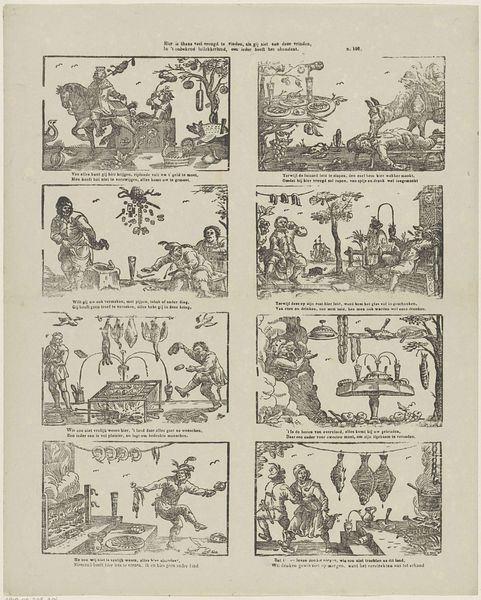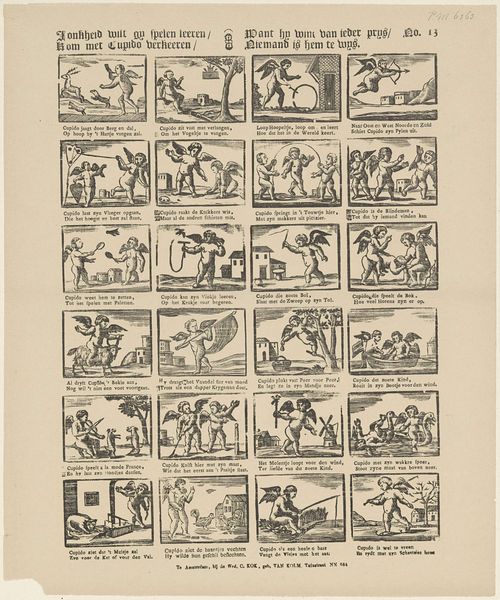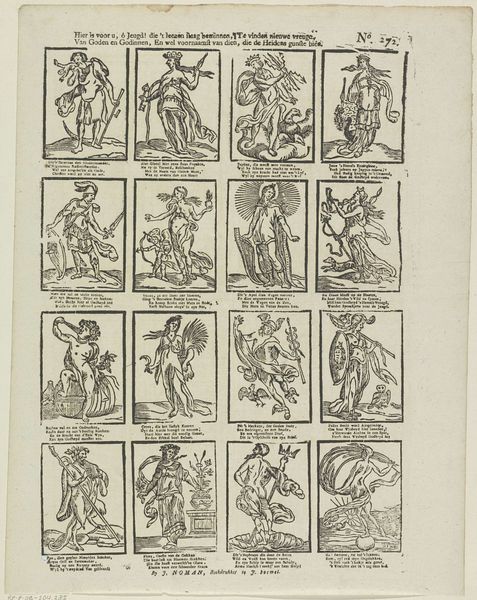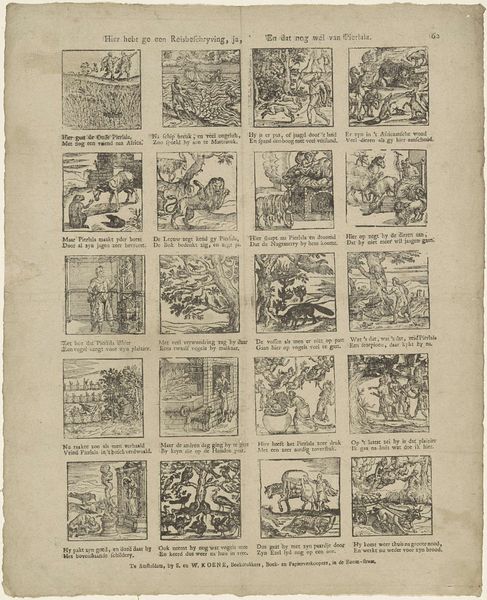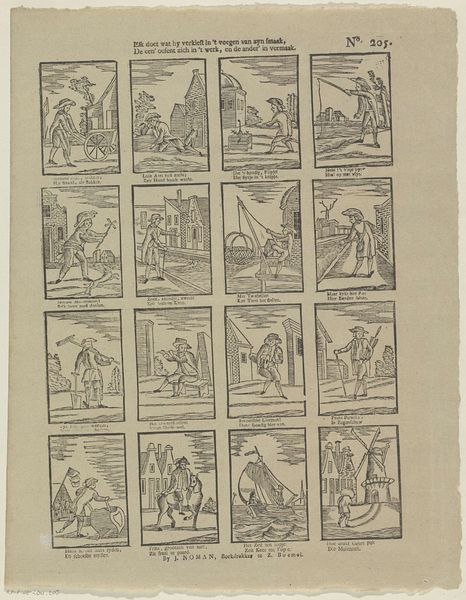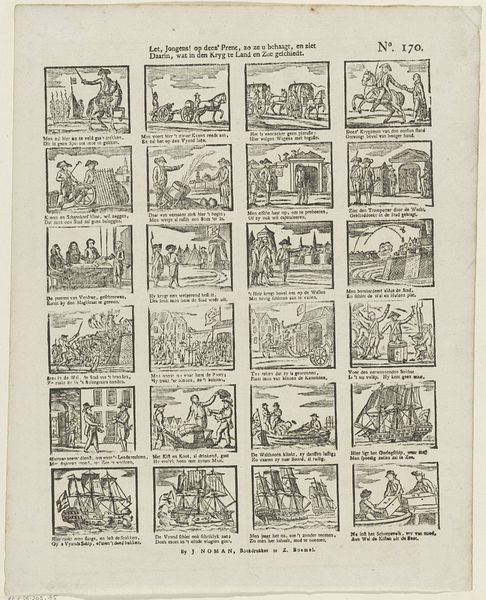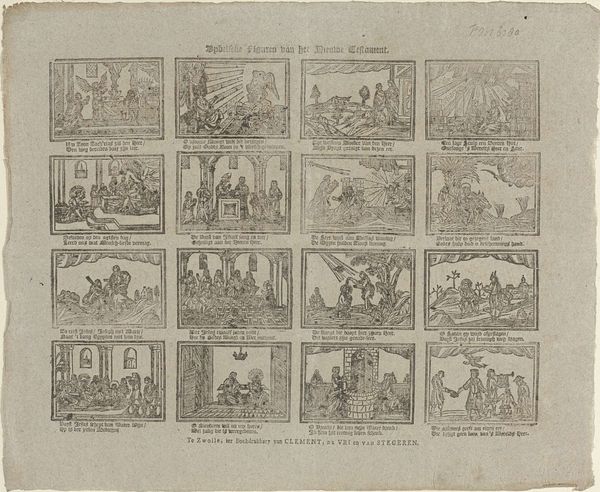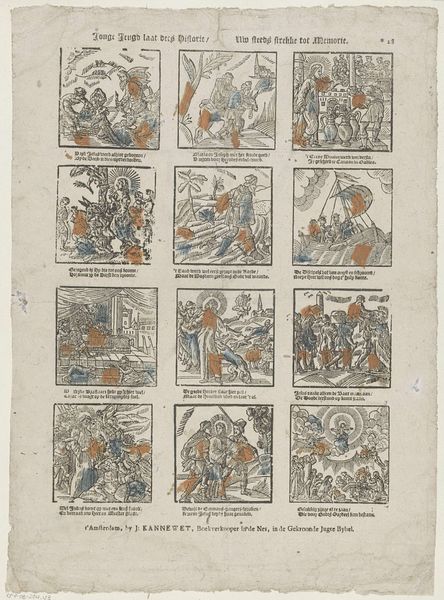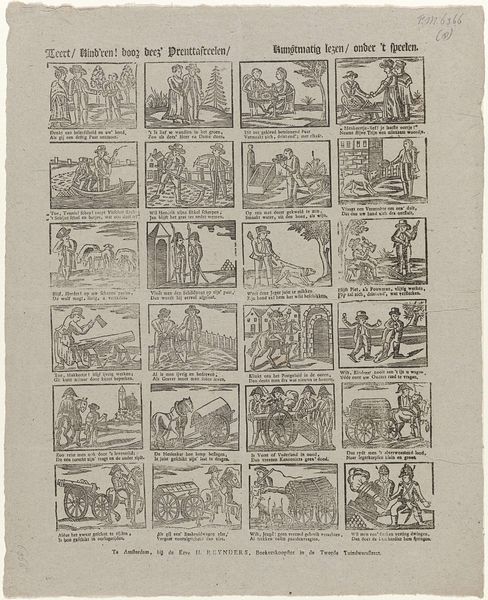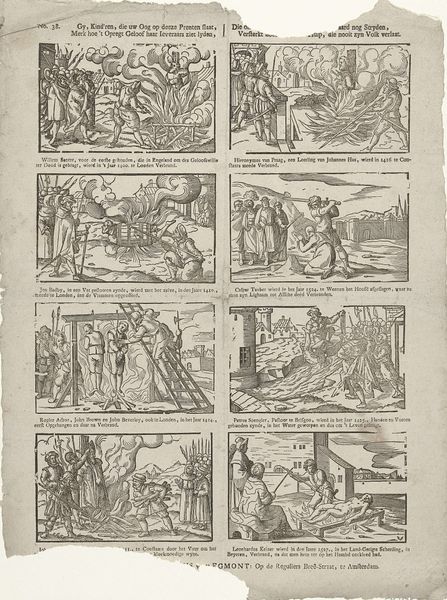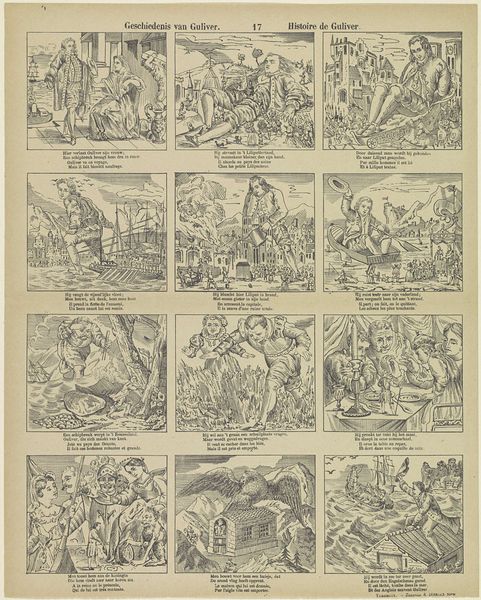
Hier is thands veel vreugd te vinden, als gy ziet aan deeze vrinden, / In 't onbekend Luilekkerland, een ieder heeft het abondant 1806 - 1830
0:00
0:00
johannoman
Rijksmuseum
print, etching, engraving
#
comic strip sketch
#
quirky sketch
#
narrative-art
#
dutch-golden-age
# print
#
etching
#
sketch book
#
personal sketchbook
#
sketchwork
#
ink drawing experimentation
#
pen-ink sketch
#
comic
#
sketchbook drawing
#
genre-painting
#
storyboard and sketchbook work
#
sketchbook art
#
engraving
Dimensions: height 409 mm, width 319 mm
Copyright: Rijks Museum: Open Domain
Editor: This is "Hier is thands veel vreugd te vinden, als gy ziet aan deeze vrinden, / In 't onbekend Luilekkerland, een ieder heeft het abondant," a print made between 1806 and 1830 by Johan Noman. It looks like a comic strip, all rendered in these meticulous engravings. What historical context informs this quirky narrative? Curator: It depicts the Land of Cockaigne, a satirical and aspirational vision of a world without labor, where food and pleasure are endlessly abundant. How does Noman's rendition reflect societal anxieties or desires of his time? Editor: I see the overabundance of food, practically growing on trees or falling into people's mouths! Were people actually starving, which made them long for such an imaginary place? Curator: Absolutely. This imagery emerges from a long tradition, gaining particular resonance during periods of famine and social unrest. Consider how printmaking itself made this dream accessible to a wider public. Was it simply escapism, or something more subversive? Editor: I hadn't considered that prints were so easily distributed! Looking at these figures lounging about and gorging themselves… were there societal concerns about wealth distribution or the virtue of hard work influencing this artwork? Curator: Indeed. This idealized land is often shown in contrast to the reality of daily struggle, offering a silent critique of social inequalities and the existing power structures. Does it glorify idleness or expose the absurdity of unending toil? Editor: I never would have considered this just a comic before, thank you! Now I see this etching is doing a lot more than just trying to be funny; it's telling us about people's desires and also critiquing society. Curator: Exactly. Examining such images gives us insight into the values and the social consciousness of the period, revealing how art engages with the pressing issues of its time.
Comments
No comments
Be the first to comment and join the conversation on the ultimate creative platform.
